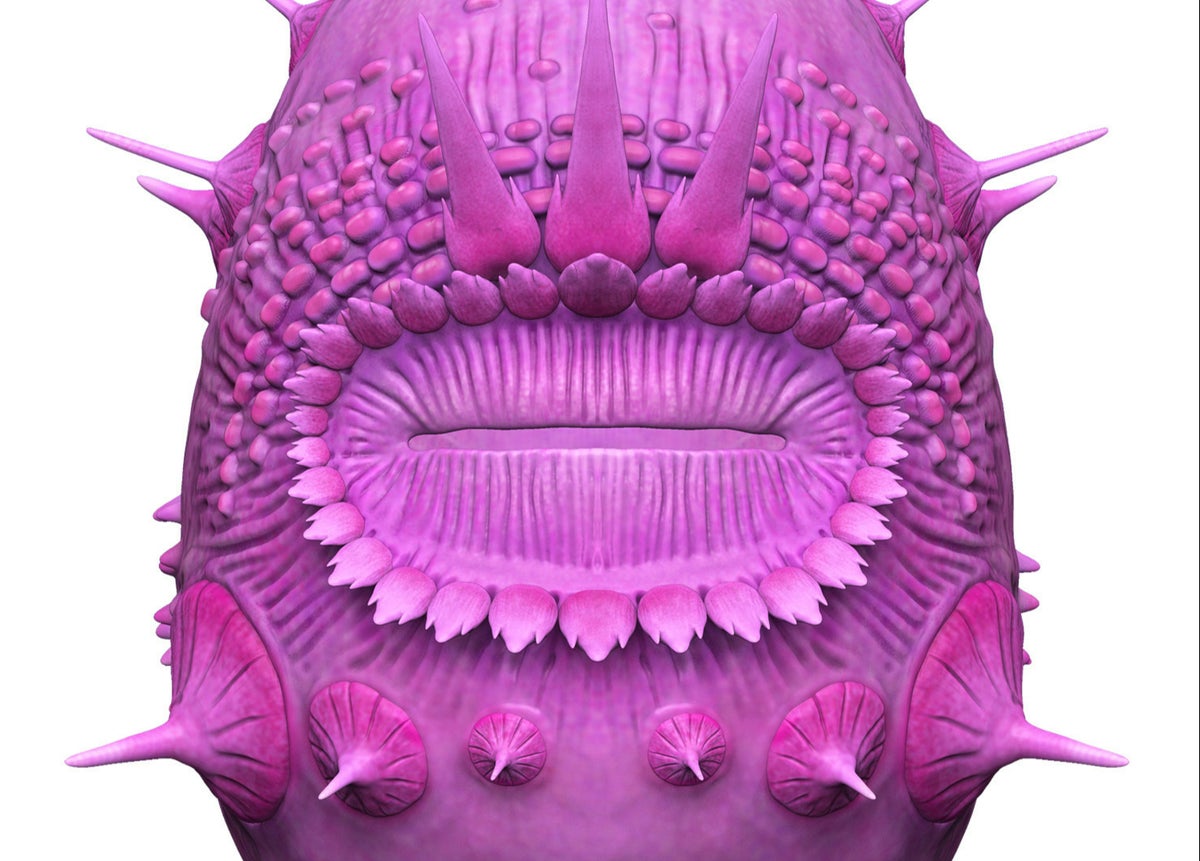Strange creature with no anus is not earliest human ancestor as previously thought

A strange microscopic creature which has “a mouth but no anus” and from which humans were earlier thought to have descended has now been found to be a part of a different family tree.
The bag-like sea creature known as a Saccorhytus also likely moved by wriggling, previous studies had revealed.
Its large mouth was found to be surrounded by spines and holes which were interpreted as pores for gills.
Based on these features, a 2017 study reported that Saccorhytus was the most primitive “deuterostome” – a broad biological category of animals encompassing sub-groups, including vertebrates and the earliest step on the evolutionary path that eventually led to humans.
However, the latest research, published on Wednesday in the journal Nature, assessed 500-million-year-old fossils from China and found the holes around the creature’s mouth are bases of spines that broke away during the preservation of the fossils.
Researchers, including those from Chang’an University in China, now believe the mysterious creature belonged to a different group of animals that includes insects and worms.
Bag-like sea creature ‘Saccorhytus’ likely moves by wriggling
(Philip Donoghue et al/PA Wire)
“Saccorhytus was a curious beast, with a mouth but no anus, and rings of complex spines around its mouth,” Yunhuan Liu, professor in Palaeobiology at Chang’an University said.
In the new research, scientists used powerful computers to construct a 3D digital model of the fossil.
The new models showed that pores around the mouth were closed by another body layer extending through, creating spines around the mouth, which they suspect would have helped Saccorhytus capture and process its prey.
“We considered lots of alternative groups that Saccorhytus might be related to, including the corals, anemones, and jellyfish which also have a mouth but no anus,” said Philip Donoghue of the University of Bristol, who co-led the study.
“To resolve the problem our computational analysis compared the anatomy of Saccorhytus with all other living groups of animals, concluding a relationship with the arthropods and their kin, the group to which insects, crabs and roundworms belong,” Dr Donoghue said.
Scanning electron microscopic image of the Saccorhytus from the Swiss Light Source in Switzerland
(Credit Shuhai Xiao)
The creature’s lack of anus, according to scientists, is an intriguing feature that could shed more light on how animal body plans evolved.
Classifying the creature as “ecdysozoan” – that includes arthropods and are characterised by having a cuticle or external skeleton – also raises questions on the origin of the body part in that group.
“This is a really unexpected result because the arthropod group has a through-gut, extending from mouth to anus. Saccorhytus’s membership of the group indicates that it has regressed in evolutionary terms, dispensing with the anus its ancestors would have inherited,” Shuhai Xiao, another co-author of the study said.
“We still don’t know the precise position of Saccorhytus within the tree of life but it may reflect the ancestral condition from which all members of this diverse group evolved,” Dr Xiao added.
For all the latest Science News Click Here
For the latest news and updates, follow us on Google News.

